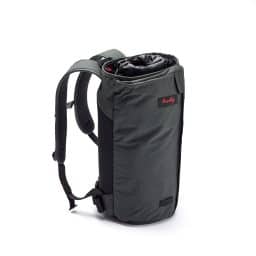Travelling with a suit is one of those little challenges most people only realise once they’re at the airport. You’ve got limited space, overhead bins that seem to play by their own rules, and the constant worry that your jacket will come out looking like it’s been through a rough night. It’s stressful enough to get to a wedding, an interview, or an important dinner on time, let alone worrying about looking crumpled.
The good news is that with a bit of planning and some smart packing choices, your suit can arrive just as sharp as when you first packed it. The key is figuring out what works best for you: garment bag or suitcase, carry-on or checked, fold or hang. Once you know your options, keeping your suit in top condition becomes much easier.
Choosing the Right Way to Travel with Your Suit
There’s no single “best” way to fly with a suit. It depends on your trip, your airline, and how much hassle you’re willing to deal with. In most cases, you’ll be choosing between carrying it on in a garment bag or packing it carefully into your suitcase.
Carry-On vs. Checked Luggage
If you can avoid it, don’t check your suit. Checked bags get tossed around, stacked, and squashed under piles of other luggage. Even the best-packed suit bag can come out looking worse for wear.
Carry-on is safer because your suit stays with you. If you’re using a garment bag, most airlines will count it as your carry-on, which means you’ll also be limited to one small personal item. Some flights have closets where the crew might hang your suit, but those spaces are usually reserved for business or first-class passengers. If the plane is full, your garment bag will likely need to go in the overhead bin, so it helps to have a soft one that can lie flat.
Wearing the Suit During Travel
One of the easiest ways to avoid creases is to simply wear your suit. This works best for shorter flights, where you won’t be sitting in it for hours. If you do wear it, take your jacket off once you’re seated and lay it flat across your lap or fold it gently over the back of your seat. When you land, hang it up as soon as possible and let it breathe. Suits made from wool or blends tend to recover quickly, especially if you give them a bit of steam in the bathroom while you shower.
Garment Bags vs. Suitcase
Garment Bags
Garment bags are designed to keep your suit hanging and wrinkle-free. They’re easy to carry through the airport and simple to hang once you land. The downside? They’re often bulky, and not every plane has room to store them properly. If your airline doesn’t have closet space, you’ll need to place it flat in the overhead bin. Still, for many travellers, a garment bag is the most reliable way to arrive looking sharp.
Suitcases
If you’d rather use a suitcase, a hard-sided one is your best bet. They’re structured, so your clothes stay flatter and are less likely to get crushed. Soft-sided cases can be easier to squeeze into overhead bins but may leave your suit more vulnerable to creases. Look for cases with a suit compartment or use a suit bag inside your suitcase for extra protection.
Explore our tips on wrinkle free clothes.
Airline Rules & Policies for Suits
Not all airlines treat garment bags the same way. Some count them as your carry-on, while others have separate allowances. Here’s a quick look at the general picture:
- American Airlines – Allows soft garment bags up to 130 cm total dimensions. Closet space is usually reserved for premium cabins.
- Delta & United – Garment bags count as a carry-on. They must fit in the overhead bin if closets aren’t available.
- British Airways – Garment bags are allowed as cabin baggage if they meet size and weight limits. Closet space is limited.
- Emirates – Economy passengers need to follow standard carry-on rules, but Business and First often allow a separate garment bag.
The takeaway? Always double-check your airline’s policy before you pack, and don’t assume you’ll get closet space on board.
Packing Techniques for Suits
If you decide to pack your suit instead of wearing it, how you fold it makes all the difference.
The Fold-and-Roll Method
This method is simple and effective:
- Lay your jacket face down on a flat surface.
- Turn one shoulder inside out, then tuck the other shoulder into it.
- Fold the jacket in half lengthwise, lapels aligned.
- Roll it gently like a scroll, keeping it loose to avoid sharp creases.
For trousers, fold them along the crease, then roll from the cuffs upwards. Rolling helps reduce pressure points that lead to wrinkles.
Using a Dry-Cleaning Bag
It might seem old-school, but those thin plastic bags from the dry cleaner are surprisingly useful. Slip your suit inside one before folding or rolling as it creates a smooth layer that reduces friction, which is often what causes creases.
Smart Packing Tools
If you travel often, it’s worth investing in packing cubes, garment folders, or even a backpack garment bag. These keep everything organised and give your suit extra protection. Tissue paper can also work as a simple barrier. Place it in the folds of your jacket or trousers to help hold their shape. Check out our backpack garment bag.
Additional Tips for Packing Your Suit Jacket
- The Shoulder Tuck – Fold one shoulder inside out and tuck the other into it. This keeps the structure of the jacket intact.
- Keep It on Top – Pack your suit last, so it sits on top of your other clothes instead of being crushed underneath.
- Use Tissue Paper – Slip a sheet between the folds to stop creases from setting in.
Packing Suit Accessories
Your suit isn’t complete without shoes, belts, ties, and shirts, but these can easily add bulk or cause wrinkles if packed carelessly.
Shoes, Belts & Ties
Stuff socks inside your shoes to save space and help them hold their shape. Place the shoes in bags to stop dirt from transferring onto your clothes. Belts can be slid around the inside edge of your suitcase rather than rolled up, which prevents bulky lumps. Ties are best rolled gently and placed inside a cube or tucked into a corner.
Dress Shirts & Undershirts
Shirts should be buttoned up before folding. This helps them keep their shape and reduces creases. If you have tissue paper, place it between folds for extra protection. Undershirts can be used as padding between more delicate items, helping absorb pressure and keeping everything in place.
Keeping Accessories Wrinkle-Free
Avoid stuffing too many small items in one place, as this can cause creasing. Spread them out, and use cubes or bags to keep each category separate. This makes unpacking easier too.
Unpacking & Wrinkle Reduction Tips
The moment you arrive, unpack your suit. Hang it up straight away on a proper hanger with wide shoulders. Run your hands gently over the fabric to smooth out light creases.
If your suit needs extra help, hang it in the bathroom while you take a hot shower. The steam will relax the fibres and release wrinkles. Portable steamers are also a great investment if you travel regularly.
The Dos and Don’ts of Packing a Suit
Do:
- Pack your suit last so it doesn’t get squashed.
- Unpack as soon as you arrive.
- Use garment bags or dry-cleaning bags for protection.
Don’t:
- Pack a damp suit because it can cause mould and odours.
- Place heavy items on top of your suit.
- Rely on hotel irons as these can damage delicate fabrics.
Quick Wrinkle Fixes
Even with the best planning, wrinkles sometimes sneak in. A few quick tricks can save the day:
- Steam – A travel steamer works wonders, but shower steam can do the job in a pinch.
- Smooth by Hand – Run your palms down the fabric to flatten out creases while it’s hanging.
- Wrinkle-Release Spray – A light mist and a gentle tug can refresh the look.
- Hairdryer – Use on low heat while gently pulling the fabric straight.
Air Travel Tips for Business Travellers
If you’re flying for work, your suit is probably your uniform for the trip. A few extra habits make life easier:
- Board Early – This gives you the best chance of finding space in the overhead bins for your garment bag.
- Direct Flights – Fewer connections mean less handling of your bag, which means fewer wrinkles.
- Use Closet Space – If you’re in business or first class, make the most of the wardrobe. Don’t be shy to ask politely.
Storage Hacks for Overhead Bins & Closets
If you have to use the overhead bin, lay your garment bag flat on top of other bags rather than squashing it underneath. If there’s a closet available, ask the crew if they can hang it for you. It’s always worth a try.
Conclusion: Key Takeaways for Wrinkle-Free Suit Travel
Wearing a suit and flying does not have to be a nightmare. But with the right combination of preparation, equipment, and good habits, you can ensure your jacket and trousers stay looking great from take-off to landing. Carry-on will always be preferable to checked luggage, garment bag will be the most successful choice if you can manage the extra item, and smart packing techniques such as folding, rolling or using dry cleaning bag can make all the difference.
Unpack as soon as you get there, let the steam out and let it iron away any wrinkles. With these tips, your suit will remain at the peak of its performance, whether you are attending a boardroom meeting, a wedding toast, or a dinner where you want to make a great impression.


